Key Points
- Various techniques can help soothe and settle a fussy baby, including rhythmic rocking, shushing sounds, using a sling, going for a stroll, feeding, or offering a dummy
- The modern landscape of parenting advice, particularly regarding baby sleep, is explored, highlighting the abundance of information available online and the importance of finding what works best for each family
- The benefits of a baby and toddler massages helps promoting relaxation and reducing stress, providing guidance on how to safely and effectively massage your child
The adjustment to early parenting is not something that anyone can really prepare you for. Your world shifts, and baby comes first. Babies let you know when they need something, and they do not have the social grace to be patient. The emotions evoked by a crying baby are no coincidence either, because without the care of another, a human baby would not survive.
One of the biggest challenges that comes with caring for a newborn is sleep and settling. Many new parents struggle with settling, and no matter how much you feed, change or burp your baby, nothing seems to work. In this article we’re going to discuss sleep and settling in more detail. But, before we get started, it’s important to know that nobody can make a baby sleep. The advice below as well as that within our Baby Sleep Guide is meant to be a guideline, but it’s still up to you to develop routines and techniques that suit you, your family and your baby.
Why do some babies struggle with sleep?
Many babies struggle to drift to sleep at some time or another. A large study in the UK found that about two thirds of parents had lied about their baby’s sleep in the past. The main reason for lying was that parents felt their sleepless baby was a reflection of their parenting ability. It’s unfortunate that parents feel the need to lie, but if two thirds of families have baby sleep problems, then maybe irregular sleep is the norm.
But why is that? It’s largely because babies are still developing. Young babies are unable to regulate their body temperature, which is a critical factor in human sleep. Worse, babies can’t reach their food source unaided, they can’t regulate intense emotions, and they’re unaware of the importance of sleep. This adds up to mean that baby sleep problems are incredibly common, and they’re also totally normal.

So what can we do to help babies at sleep time?
Some parents may be tempted to expect great things from their baby, such as going into their cot and falling to sleep when they are tired! But some babies, depending on who they are, may need more assistance to wind down and calm for sleep than others. In the first 3 to 4 months, babies can become overwhelmed quite quickly, and need care and soothing from an adult. If you’re struggling to settle your baby then you can try:
- Rhythmical rocking motions, or a cuddle, or both
- Shh-ing sounds, just like those the baby heard during their time in utero
- Using a sling
- Taking a stroll in the pram
- Feed your baby or giving a dummy to suck on
Whatever you offer, keep in mind that your baby may respond sometimes and not others. Having a number of tricks up your sleeve is the best way to calm a fussy baby when the usual tactics aren’t working. Our baby sleep guide comprehensively covers safe sleeping, wrapping, safety and more.
Baby sleep and settling in the 21st century
Your baby’s sleep schedule can be one of the most challenging parts of being a new parent. Particularly for those who’ve grown up in the modern world, it can be difficult to find advice and support that actually works for your family. Unfortunately, that leaves many new parents turning to the internet for advice, and the information doesn’t always provide the knowledge we need.
The internet has plenty of advice and solutions, but it’s often based on idealised expectations of baby sleep. Advice can be helpful, but it may also be a hindrance where conflicting advice becomes confusing. Similarly, advice from friends is great, but it may not be suited to every parenting style or the needs of your baby.
Ultimately, this makes sleep and settling a bigger challenge than it ever has been. But the reality remains the same. Your baby’s genetic makeup and experience makes them unique, and it informs their sleeping habits. That means it’s perfectly okay to seek advice from an online parenting course and to take advice from friends, but make sure it’s something that works for your family. If you receive advice that you think won’t work, chances are that your instincts are correct.
Baby and toddler massages for helping sleep
Touch is one of the first ways we communicate with each other. Babies in-utero are constantly having indirect contact with their mother’s muscles and tissues, and their body is accustomed to feeling some degree of gentle friction.
Skin-to-skin contact immediately after birth is promoted as being an incredibly positive way to build emotional connection between parents and their baby. It makes sense that babies generally respond to massage because it builds on what they are used to. And toddlers who are used to being massaged as babies learn that it is a lovely thing.
Why Baby and Toddler Massages Are So Good
Massage does appear to reduce levels of stress hormones in unsettled babies. Skin to skin contact also seems to improve a baby’s health, boost weight gain in premature babies, ease crying and have a positive effect on the interaction between a mother and her baby.
It is worth knowing there is no current evidence supporting infant massage as having a positive effect on babies’ growth or development.

How to Give Your Baby or Toddler Massage
Remember, there’s no ‘right’ way to massage. What is important is that you are gentle and sensitive to your baby or toddler’s responses. Expect your toddler to be more mobile and distractible than a young baby.
- Ask your child’s permission first before you massage them. Although they will not understand what you are saying, they will pick up on the tone of your voice. Seeking permission is also a respectful way of acknowledging your baby’s rights over their own body.
- Pick a time when you are both calm and happy. Make sure you are not in a rush to be somewhere else and can be fully focused on your baby.
- Choose a safe and stable place to massage your child. Their change table/mat, a bed, their cot or even the floor are all good options.
- Get organised by warming the room or picking a warm spot in your house, so your child doesn’t become cold. Choose a room which has filtered light and where there are no draughts.
- Lay out a couple of towels for your child to lie on and have some massage or vegetable oil handy. Avoid using nut oils in case of allergies.
- Take off your jewellery and warm your own hands. Rub a little oil or massage lotion between your hands. Take some deep, relaxing breaths and make a conscious effort to be ‘in the moment’ with your little one.
- Put on some relaxing music or something which will add to the relaxing mood you are trying to create.
- Lay your child on their back or front; it is not important which to start with.
- Undress your child; though leave their nappy on until you have worked your way up their legs to their bottom.
- Start at their feet by using gentle strokes to massage their soles and toes. Be aware that some babies have ticklish feet and do not find foot massage pleasant.
- Use firm, continuous strokes with the whole of your hand if you can. The palm of your hand or just your fingers is fine too.
- Work your way up their legs, using both your hands to make long stroking actions, like how you would pat a cat. As you lift one hand, place the other one at the top of their leg, working your way down to their toes.
- Massage their tummy in a gentle, clockwise direction. Bicycle their legs and gently bring their knees up to their chest and back down again.
- Stroke your child’s arms and hands with long continuous strokes.
- You can also massage your child’s face, using the pads of your fingers to go in circular directions around their eyes and mouth.
- Turn your child onto the other side and repeat the massage steps.
Our Products
-
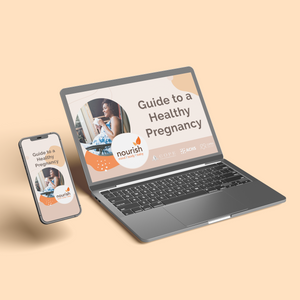
01. Guide to a Healthy Pregnancy
$55 -
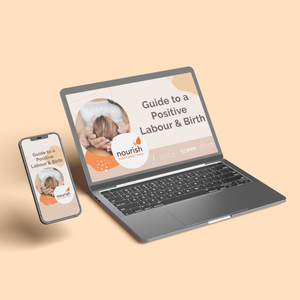
02. Positive Birthing Course
$55 -
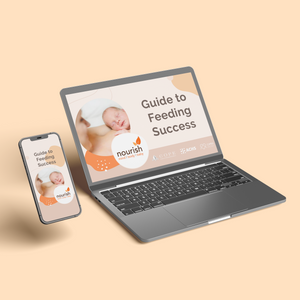
03. Infant Feeding Guide
$55 -
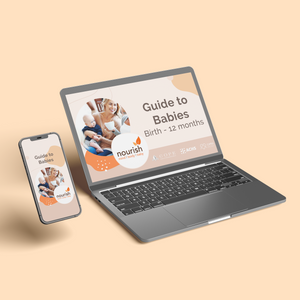
04. Baby Sleep Guide - First 12 Months
$55 -
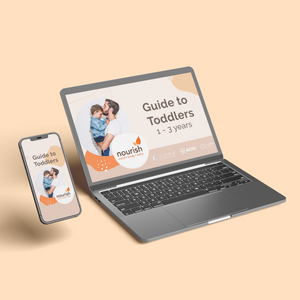
05. Toddler Parenting Course 1 - 3 Years
$55
-
 When to Start Antenatal Classes?
When to Start Antenatal Classes?
Becoming a parent is an incredible milestone, but it comes with a host of changes that can be daunting, especially for first time parents. Antenatal classes are all about offering expectant parents the education they need to make informed decisions, look after their bodies and care for their newborn babies. While you probably already have a long list of things you need to accomplish during your pregnancy, it’s a good idea to make time to attend antenatal classes.
-
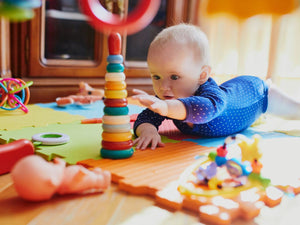 Development Milestones 4-8 Months
Development Milestones 4-8 Months
As they reach the middle of their first year, you'll start to see bigger leaps in their growth and ability!
In this article, we’re going to discuss your baby’s developmental milestones between 4-8 months, and what you can expect along the way.






 When to Start Antenatal Classes?
When to Start Antenatal Classes?
 Development Milestones 4-8 Months
Development Milestones 4-8 Months








